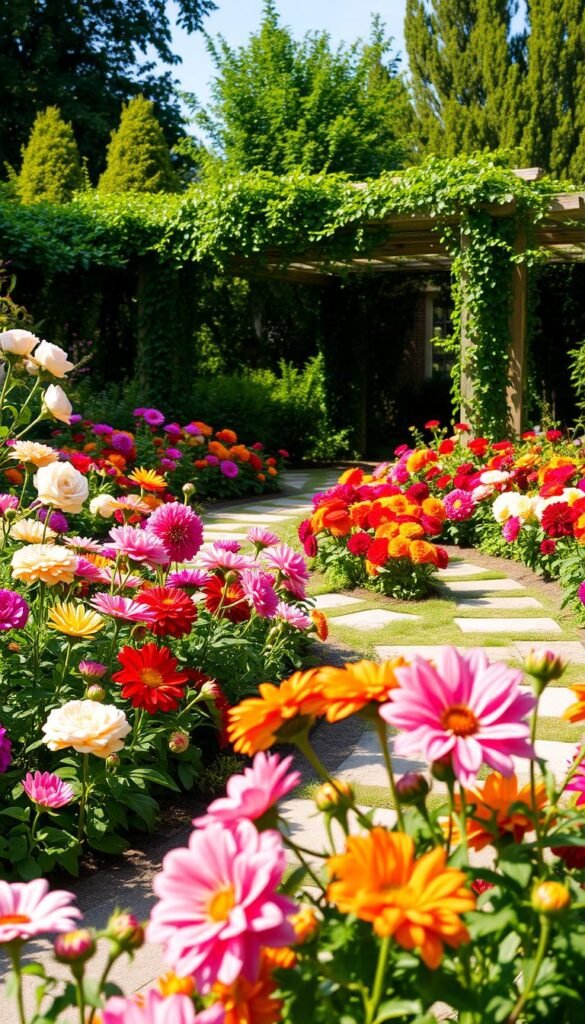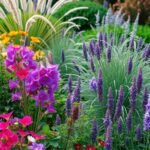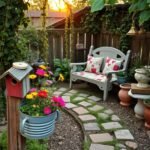Creating a colorful outdoor space starts with understanding your environment and making smart choices. Whether you’re designing your first plot or refining an existing area, success comes from matching plants to your specific conditions. Sunlight, soil quality, and climate all play crucial roles in helping your selections thrive.
Start by observing your space throughout the day. Note which areas get full sun versus partial shade, and test your soil’s pH level. Many gardening centers offer free or low-cost testing kits—a small step that prevents big headaches later. Pair this knowledge with low-maintenance options for raised beds to simplify watering and pest control.
Smart design saves time and energy. Group species with similar water needs together, and consider adding native varieties that naturally resist local pests. Proper spacing prevents overcrowding, letting air circulate freely around each plant. Remember, healthy roots mean stronger growth above ground!
With thoughtful preparation and ongoing care, your outdoor area can become a lively retreat that changes beautifully with each season. Let’s explore how to turn your vision into reality, one smart decision at a time.
Understanding Your Garden Environment
Every green space has its own microclimate and soil story. While USDA hardiness zones offer a starting point, they don’t tell the whole tale. Gardening expert C.L. Fornari notes:
“Plants listed for my Zone 7 area sometimes struggle—local weather patterns matter just as much as temperature averages.”
Beyond the Zone Map
Your climate includes more than winter lows. Track these factors:
- Average rainfall and humidity swings
- Last frost dates and summer heat spikes
- Wind patterns affecting delicate blooms
Connect with nearby nurseries or agricultural extension offices. They’ll share which plants thrive in your specific conditions.
Digging Into Dirt Details
Soil type determines water flow and nutrient access. Try this simple test:
- Squeeze moist dirt—if it holds shape, it’s clay-heavy
- If it crumbles easily, sandy texture dominates
- Loamy soil feels springy and breaks apart gently
Adjust pH levels with compost or sulfur based on test results. Compacted earth? Mix in perlite to help roots breathe and spread.
Flower Garden Basics: Top Tips for Growing Healthy, Vibrant Blooms
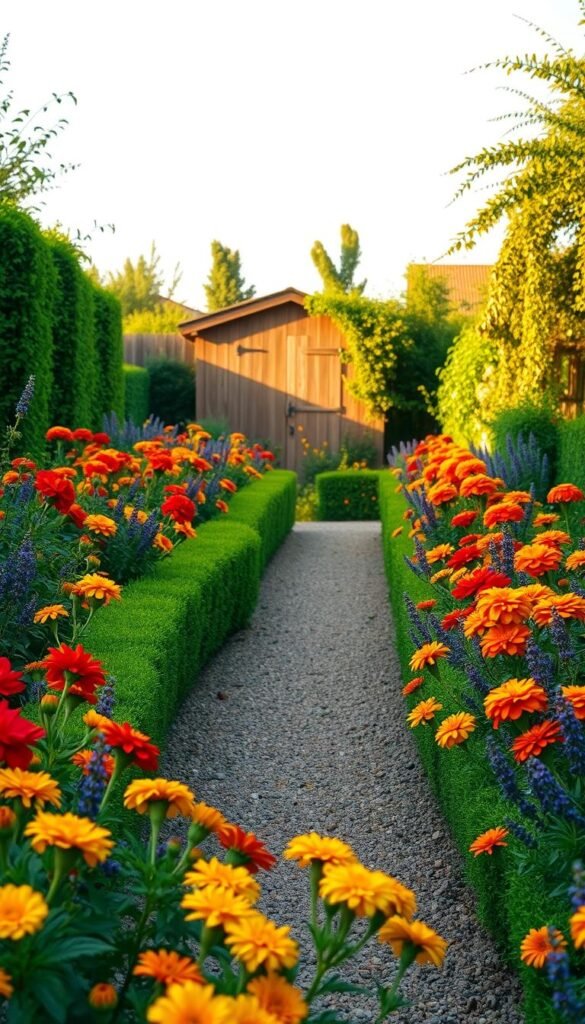
Successful cultivation begins with treating your outdoor space as a living ecosystem. Instead of focusing solely on aesthetics, prioritize creating conditions where plants naturally flourish. Think of your plot as a partnership between earth, sunlight, and careful stewardship.
Start by nurturing the soil—it’s the cornerstone of vibrant growth. Enrich earth with compost or aged manure to boost nutrient levels. Test drainage by digging a 12-inch hole and filling it with water. If it takes over four hours to empty, consider raised beds or adding organic matter.
Three elements work together for thriving results:
- Seasonal awareness: Track frost dates and heat waves
- Smart plant selection: Choose easy-care varieties matching your region
- Proactive care: Inspect leaves weekly for pests or discoloration
Adjust your approach based on what you observe. Wilting blooms might need afternoon shade, while leggy stems often crave more sunlight. Keep a journal to track changes and refine your methods each season. Remember—every adjustment strengthens your garden’s resilience.
Selecting the Perfect Location for Your Garden

Your yard’s layout holds the key to thriving plants. Before digging, spend a week tracking how light moves across your space. Morning sun behaves differently than afternoon rays, and seasonal changes affect both shade patterns and soil moisture.
Mapping Sun Exposure and Shade Areas
Most blooming favorites need full sun—six+ hours of direct light. Use this simple guide:
| Light Condition | Daily Hours | Plant Examples |
|---|---|---|
| Full Sun | 6-8+ | Dahlias, Coneflowers |
| Partial Sun | 4-6 | Foxglove, Coral Bells |
| Full Shade | Hostas, Ferns |
Watch how shadows fall from buildings or trees. South-facing areas often get the most intense light, while north sides stay cooler. Rotate your observations through spring and summer—what’s sunny in May might be shaded by July.
Observing Drainage Patterns After Rain
Walk your yard after a downpour. Puddles lasting over four hours signal poor drainage. Sloped areas usually drain faster than flat spots. For problem zones, consider these fixes:
- Mix compost into clay-heavy soil
- Build raised beds for better water flow
- Redirect runoff with French drains
Pair your findings with site selection strategies to maximize plant health. Remember—the right spot today prevents headaches tomorrow!
Mastering Sunlight and Drainage for Optimal Growth

Your garden’s success hinges on understanding the dance between sunlight and drainage. Start by grabbing graph paper and sketching your yard’s layout. Track light patterns every two hours on a clear day—mark areas that bake in direct rays versus those hiding in shadows.
Identifying Light Zones Like a Pro
Different plants thrive under specific conditions. Use this reference table to categorize your space:
| Light Type | Description | Drainage Tip |
|---|---|---|
| Full Sun | 6+ hours direct light | Use mulch to retain moisture |
| Partial Shade | 3-6 hours filtered light | Add compost for absorption |
| Bright Indirect | No direct sun, bright ambient | Ensure loose soil mix |
| Dappled Shade | Filtered through trees | Monitor moisture closely |
Notice how afternoon sun hits harder than morning rays? Western zones often need drought-tolerant selections. Pair your light map with drainage checks—areas that dry slowly might need raised beds.
Smart pairing prevents root rot and sunburn. Place water-loving species where puddles linger, and sun-seekers where shadows rarely fall. This way of matching growth needs to your yard’s reality builds healthier roots and brighter blooms.
Choosing the Ideal Flowers and Plant Varieties
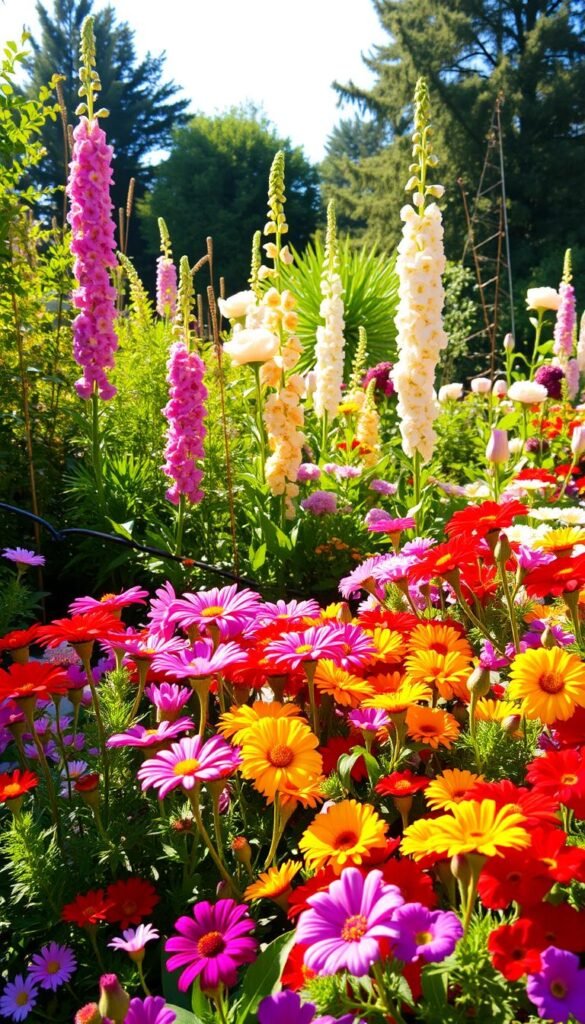
Building a lively outdoor display requires smart pairing of plants that complement each other’s strengths. The secret lies in balancing reliable performers with seasonal showstoppers while supporting local ecosystems.
Blending Annuals and Perennials for Continuous Blooms
Perennials form your garden’s backbone, returning yearly with minimal effort. As horticulturist Myers explains:
“The old adage about perennials is: The first year they sleep, second they creep, and third they leap. I fill gaps with annuals like Blue Horizon ageratum or single zinnias.”
Pair these long-term investments with annuals that bloom nonstop. Consider these combinations:
- Daylilies (perennial) + petunias (annual)
- Coneflowers (perennial) + marigolds (annual)
- Hostas (perennial) + impatiens (annual)
Incorporating Native Plants for Local Adaptability
Local species thrive because they’ve evolved with your climate. They need less water and resist pests naturally. Expert Fornari notes:
“Annuals bridge color gaps as perennials cycle through blooms. Natives handle weather swings better than imports.”
Try these regional favorites:
- Northeast: Black-eyed Susans
- Southwest: Desert marigolds
- Pacific Northwest: Red columbines
Rotate plants through seasons. Early bloomers like Virginia bluebells make space for summer phlox and fall asters. This approach keeps your space vibrant while supporting bees and butterflies.
Creating a Stylish and Functional Garden Layout
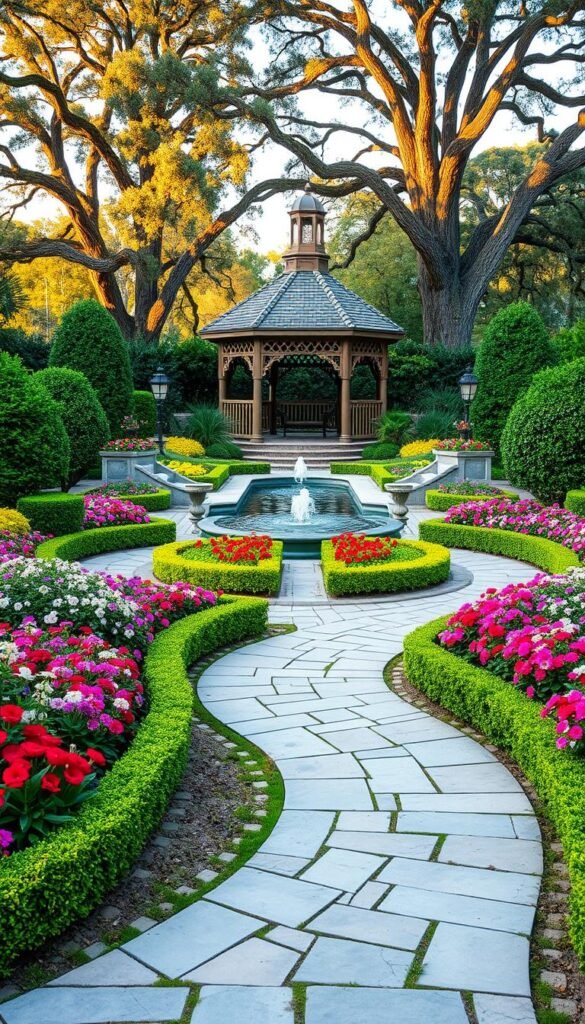
Your outdoor space becomes an extension of your personality when you blend aesthetics with smart planning. Start by assessing your home’s architecture and how much time you can dedicate to upkeep. A beginner-friendly checklist helps establish strong foundations before diving into design choices.
Designing with Formal, Cottage, and Naturalistic Styles
Three distinct approaches let you express your vision while meeting practical needs. Landscape designer Julie Moir Messervy advises:
“Your style should whisper the same language as your home’s exterior—whether that’s crisp symmetry or carefree charm.”
| Style | Characteristics | Maintenance Level |
|---|---|---|
| Formal | Symmetrical hedges, geometric beds | High (weekly trimming) |
| Cottage | Mixed flowering plants, curved paths | Moderate (seasonal pruning) |
| Naturalistic | Native grasses, meandering lines | Low (annual cleanup) |
Formal layouts shine in spacious yards with clean-lined homes. Cottage designs soften traditional cottages or farmhouses. Naturalistic types blend seamlessly with woodland settings.
Prioritize accessibility by adding stepping stones through dense plantings. Group species with matching water needs near your spigot. Remember: Your ideal design balances beauty with how you actually live.
Implementing Effective Planting and Maintenance Techniques
A thriving outdoor space begins below the surface—where roots access nutrients and moisture. Start by getting intimate with your dirt through a professional soil test. These kits analyze pH balance and nutrient levels, delivering clear improvement steps within days.
Building Fertile Foundations
Your test results reveal what’s missing. Clay-heavy earth benefits from compost to loosen texture, while sandy patches need organic matter to hold moisture. For acidic soils, sprinkle lime. Alkaline types? Sulfur brings balance.
Prep beds by removing weeds and breaking up compacted areas. Mix amendments 6-8 inches deep—this gives plants room to stretch their roots. Consider these tweaks:
- Add worm castings for slow-release nutrition
- Layer mulch to suppress weeds naturally
- Rotate crops annually to prevent nutrient depletion
Regular maintenance keeps beds productive. Water deeply but less frequently to encourage strong root systems. Check leaves monthly for discoloration—it often signals needed care adjustments. With prepared earth and attentive habits, your green investments will flourish.

